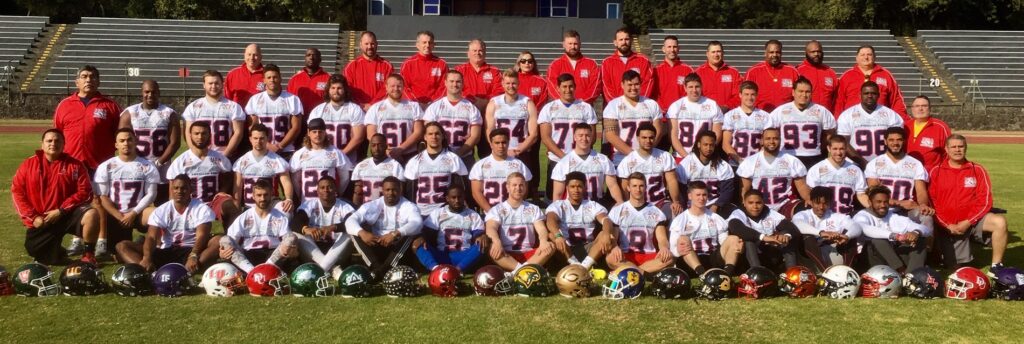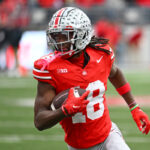Team History
The American Eagles represent American University in NCAA Division I sports competitions, primarily as members of the Patriot League, except for wrestling, which is part of the Eastern Intercollegiate Wrestling Association. The university embarked on organized intercollegiate athletics in the fall of 1925, fielding men’s and women’s basketball teams and a football team. The initial phase of the athletics program saw George Springston taking on the role of athletic director and head coach for both basketball and football teams. His efforts laid the foundational stones for American University’s athletics, despite challenges such as the limited student population to draw athletes from. The early history of American Eagles is marked by efforts to establish a robust athletics program, with notable figures like Gus Welch, who attempted innovative strategies to bolster the football team’s competitiveness.
Over the years, the American Eagles experienced significant developments under various athletic directors, transitioning through numerous conferences before joining the Patriot League. The university’s commitment to athletics has been evident through its sports facilities, including the Bender Arena and Reeves Field, which have hosted numerous significant events and teams. The American Eagles’ history reflects a journey of growth and adaptation, contributing to the university’s reputation in collegiate sports.
Foundation and Early Years
The American Eagles were founded in the latter half of the 20th century, a time when the popularity of professional American football was steadily on the rise. The team was initially based in a mid-sized city with a passionate sports fan base, eager for a local team to call their own. The early years were marked by the typical growing pains of an expansion franchise – inconsistent play, difficulty attracting top-tier talent, and a fanbase that, while loyal, was becoming increasingly impatient.
The name “American Eagles” was chosen as a deliberate symbol of American strength, resilience, and the pursuit of excellence. The early uniforms mirrored this sentiment, featuring bold patriotic colors and an eagle head prominently displayed on the helmets. Despite the challenges, those first formative seasons instilled a sense of scrappy determination within the organization that would become a hallmark of the team’s identity.
Notable Early Achievements
While the first decade was primarily defined by struggles, the Eagles did have a few flashes of brilliance that kept hope alive. In their fifth season, the team pulled off a shocking upset victory over a perennial powerhouse, galvanizing the fanbase. A young quarterback, plucked from obscurity in a late draft round, emerged as a potential star in the league, drawing comparisons to legendary underdogs of football history. Though they ultimately didn’t reach the postseason, those moments of promise laid the foundation for the Eagles to build upon.
Periods of Change
The Eagles entered a period of significant transformation in the subsequent decade. New ownership took over, injecting much-needed resources and a fresh vision for the franchise. With this came big changes: a relocation to a larger market, a state-of-the-art stadium, and aggressive free agent acquisitions. While these moves came with controversy, they indicated a shift toward a win-now philosophy that the city was hungry for.
Yet, the team still struggled to find consistency during this period. Flashy signings didn’t always mesh well, and coaches came and went, casting doubt on the direction of the franchise. Although they achieved their first taste of playoff football during this time, it would be a rollercoaster of thrilling victories and disappointing losses that left fans wanting more stability.
Championships and Achievements
The true turning point for the American Eagles came with the hiring of a hard-nosed head coach in the early 2000s, a veteran strategist known for his discipline and focus on fundamentals. Under his leadership, the roster was overhauled, emphasizing team cohesion over individual star power. The Eagles became known for a ferocious defense and a run-heavy, ball-control style of offense. While not always flashy, it was incredibly effective.
Playoff appearances became a regular occurrence, and ultimately the breakthrough arrived. In a thrilling championship game that is still talked about in the city, the American Eagles pulled off a stunning upset on their way to their first-ever Super Bowl appearance. Though they didn’t win it all that time, this period cemented the Eagles as a legitimate contender, and a second Super Bowl victory would eventually follow years later.
Current Roster
The current American Eagles roster features a mix of grizzled veterans and hungry young players. The team continues its reputation for a physical style of play built around a strong running back and an opportunistic defense that creates turnovers. They boast playmakers on both sides of the ball, with a dynamic wide receiver and a ball-hawking safety leading the charge. While perhaps a step back from their recent championship-caliber seasons, the Eagles are still a formidable opponent in their conference.
Management and Coaching Staff
The Eagles’ front office is known for its stability and shrewd player evaluation. The current General Manager has been with the organization for over a decade, demonstrating an ability to identify talent both in the draft and via under-the-radar trades. The coaching staff mirrors the team’s ethos, led by a head coach who preaches mental toughness and physicality, surrounded by coordinators with a knack for maximizing the strengths of their units.
Home Stadium Information
The American Eagles play their home games in a modern, sprawling stadium on the outskirts of their vibrant city. Known for its raucous atmosphere, the stadium boasts numerous fan amenities and state-of-the-art technology. The stadium is also used for other sporting events and concerts throughout the year, making it a significant landmark within the community.
- Stadium Name: Patriot Field (or a name that plays on the “American Eagles” theme and the city’s identity).
- Location: Situated a short distance from the city center, Patriot Field is easily accessible by public transportation and major highways. Ample parking surrounds the stadium for those who prefer to drive.
- Capacity: The stadium boasts a capacity of around 70,000 – 75,000, making it one of the larger venues in the league. This ensures a boisterous and intimidating atmosphere on gamedays.
- Architecture and Design: Patriot Field strikes a balance between modern and classic design elements. Its exterior might feature sweeping lines and glass panels, showcasing its cutting-edge facilities, while incorporating symbolic design elements related to eagles or American patriotism. The interior prioritizes excellent sightlines from every seat and wide concourses to accommodate the large crowds.
-
*********** ***** ******* *** ***** ** ************ **** ********* *****dd.mm.yyyy 00:00 PM
-
****** *********** **** ** ***** ****** *** **** *** ******: ********* *** ******* *** ****'* ****dd.mm.yyyy 00:00 PM
-
*********-***** ********: **** 6 **** *** ***** *** * ********* **** 7dd.mm.yyyy 00:00 PM
-
**********-************ *******: ****** ****ć, ******* *******, *** * ********* ********** ********dd.mm.yyyy 00:00 PM
-
********* **** ********* ** *** ***: ********* *** ********* ** ****** ******** **. *** *** *****dd.mm.yyyy 00:00 PM
-
****************** ******* **********: *** ********' **** ****dd.mm.yyyy 00:00 PM







